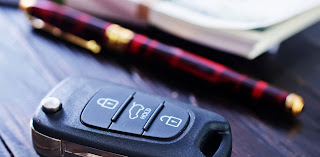Car repairs can be very expensive. When faced with big repair costs, many people resort to an emergency loan or cut their losses and scrap their vehicle. However, these aren’t the only ways of dealing with high car repair bills. Here are just a few ways to make a trip to the mechanics more affordable.
Have a rainy day fund
Everyone should have a rainy day fund. This is a savings account that can help to pay for expensive disasters, whether it’s a car repair, expensive medical treatment or property maintenance. They key is to only use this money in an emergency and to not dip into for general spending. These accounts can be great for paying for high deductibles, allowing you to lower your insurance rates.
Make an insurance claim
If the damage was not your fault, you may be eligible for an insurance claim that can help to cover repair costs. Don’t try and protect your no claims bonus – you’ll likely save more money by making a claim than you would from any bonus in the future. Always notify your insurer within 48 hours of an accident and only seek repairs once your insurer has paid you your compensation. You don’t want to get repairs only to find out that your insurer wants extra photos of the damage, which you then can’t supply.
Make a legal claim
It may also be possible to make a legal claim is the damage wasn’t your fault, particularly if you were injured. Personal injury lawyers may be able to win you compensation to help pay for any medical bills and vehicle repair bills. Search for experienced lawyer and look out for ‘no win no fee’ deals that could save you money if your claim is unsuccessful.
Shop around for car repair quotes
Different repair centres all charge different rates when it comes to repairs. Try to get multiple quotes from repair centres so that you can then compare prices and choose the cheapest rate. Be wary of some repair centres that may charge suspiciously low rates. It’s possible these repair centres may be making up for a bad reputation – check online to see if there are any reviews of the company. You don’t want to end up with a botch job that results in more future costs.
Buy your own parts
You can often deduct costs by ordering your own parts. Car repair centres make a profit on any parts they have to order in. There are lots of sites online that sell car parts, the cheapest of which are likely to be second-hand. These second-hand parts are worth considering, although you don’t want to buy anything too worn that may need to be replaced again in a few months. Always use trusted parts dealers that have a good online reputation.
Try some DIY repairs
Major repairs are best left to a mechanic, however there may be some small repairs that you feel confident enough to take on yourself. There may be instructions in your car’s driving manual when it comes to various small repairs like changing a headlight bulb or changing a brake pad. If not, you can find instructions for these tasks online through the likes of Youtube. Make sure that you have the right tools for the job. Some tools may be costly – in such cases, it’s best seeking a professional rather than investing in a specialist tool you may never use again.
Consider preventative maintenance
Most people getting their vehicle fixed will focus on the necessary repairs. However, in some cases it could be worth paying extra for a few preventative repairs in order to save money in the long run. A mechanic might recommend getting your cam belt replaced even if it is not mandatory. Replacing it early could prevent other parts getting worn as a knock on effect.

No comments:
Post a Comment